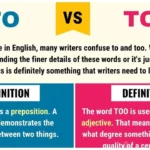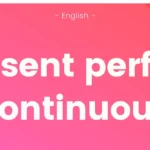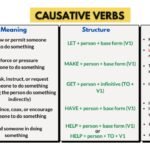Use Of is, am, are: Generally, is/am/are is used for those Hindi sentences in which the verb ends with “is/am/are + V4” which indicate present time and the work is happening in the present tense or is ongoing, for that is/am/are is used.
By using some of its rules and structures, it will be easy to make sentences with the help of which you will be able to easily translate sentences like “is/am/are + V4” It is also used as Noun, Pronoun, Adjective, Adverb.
is, am, are Uses With With Singular And Plural Subjects
| Singular | Plural |
|---|---|
| I– am, was, will | You – are, were, will |
| He– is, was, shall | We– are were, will |
| She– is, was, shall | They – are, were, will |
| It– is, was, will | It’s – are, were, will |
| Name– is, was, will | Name,s – are, were, will |
| This– is, was, will | These – are, were, will |
| That– is, was, will | Those – are, were, will |
is/am/are +Noun/Pronoun/Adjective/Adverb
Rule 1 : To Show Present time
Examples:
- She is a teacher.
- They are happy.
- He is my friend.
- The book is interesting.
- We are here now.
- The cake is delicious.
- I am a student.
- The cat is on the table.
- She is quite talented.
- The car is new.
Rule 2 : To Show Talent
Examples:
- John is an excellent musician.
- She is very creative.
- They are skilled artists.
- He is a talented chef.
- Maria is a great dancer.
- We are proficient in languages.
- The athlete is incredibly strong.
- Laura is an exceptional writer.
- The scientist is innovative.
- He is a brilliant mathematician.
Rule 3 : This rule is used for any Hindi sentence which ends with “is/ am / are + V4 + to”.
Examples:
- She is going to be a doctor.
- They are going to be excited about the trip.
- He is going to be a great leader.
- We are going to be on time.
- The project is going to be successful.
- I am going to be tired after the workout.
- The event is going to be fun.
- She is going to be an expert in the field.
- They are going to be ready soon.
- The new policy is going to be effective.
Rule 4 : This rule is used for any Hindi sentence which ends with “is + to”
Examples:
- The team is to be the next champion.
- She is to be the new manager.
- They are to be the future leaders.
- The plan is to be executed by tomorrow.
- He is to be the guest speaker.
- The project is to be completed by next week.
- We are to be at the venue by noon.
- The task is to be finished by the end of the day.
- She is to be the representative of the group.
- The proposal is to be reviewed by the committee.
is/am/are in Infinitive = To Plane
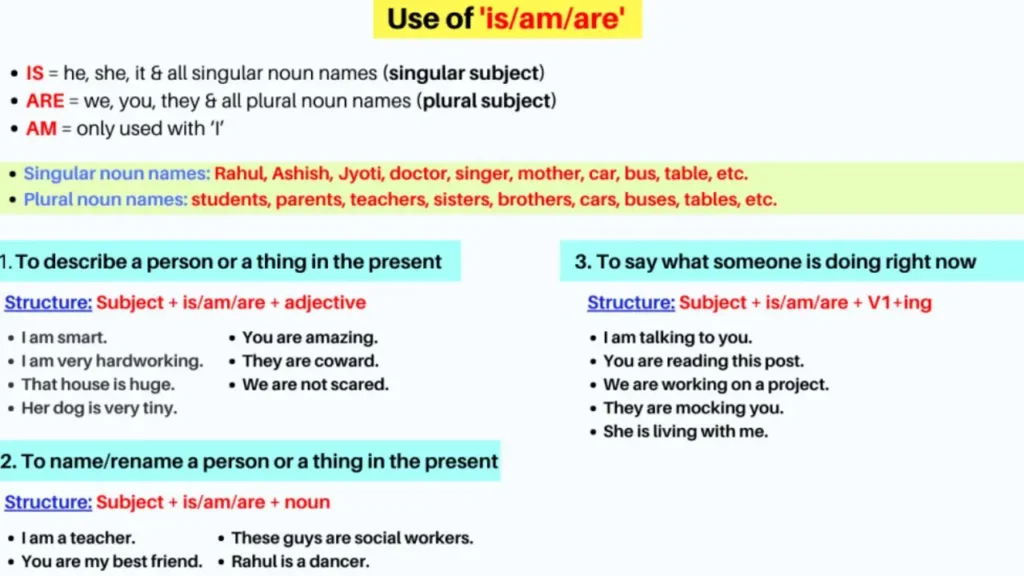
Rule 1 : If there is a plan, intention or certainty etc. at the end of time, then is/am/are + Infinitive is used.
Examples:
- She is to meet her friend for lunch.
- They are to start the new project next week.
- I am to call the client tomorrow.
- He is to finish the report by Friday.
- We are to attend the conference next month.
- The company is to launch the new product soon.
- She is to take a vacation in the summer.
- They are to complete the training by the end of the year.
- I am to visit the museum this weekend.
- He is to lead the team in the new initiative.
Rule 2 : This rule is used for a nearby plan.
Examples:
- She is about to leave for her appointment.
- They are about to start the meeting.
- I am about to begin my new job.
- He is about to give his presentation.
- We are about to make a big announcement.
- The team is about to go on a field trip.
- She is about to finish her project.
- They are about to launch the campaign.
- I am about to order dinner.
- He is about to sign the contract.
Rule 3 : This rule has to be used for a very nearby plan.
Examples:
- She is just about to leave the office.
- They are just about to start the event.
- I am just about to finish my assignment.
- He is just about to announce the winner.
- We are just about to start our vacation.
- The team is just about to wrap up the project.
- She is just about to make a decision.
- They are just about to begin their rehearsal.
- I am just about to make a call.
- He is just about to step onto the stage.
Rule 4 : This rule is used for a Hindi sentence which ends with the verb “is/ am / are +V4 + to”
Examples:
- She is going to start a new course next semester.
- They are going to visit their relatives next week.
- I am going to buy a new car soon.
- He is going to join the gym next month.
- We are going to renovate the house this summer.
- The company is going to introduce a new policy.
- She is going to participate in the competition.
- They are going to explore new business opportunities.
- I am going to learn a new language.
- He is going to take a sabbatical year.
Rule 5 : This rule is used for predetermined time
Note : This structure shows that a plan is going to be completed on a predetermined time.
Examples:
- The meeting is scheduled to begin at 10 AM.
- The train is scheduled to depart at 6 PM.
- Her presentation is slated to start at noon.
- The event is scheduled to take place next Friday.
- The product launch is slated for the end of the month.
- The conference is scheduled to end by 5 PM.
- The flight is scheduled to arrive at 8 AM.
- The ceremony is slated to commence at 3 PM.
- The report is scheduled to be submitted by Monday.
- The maintenance work is slated to begin on Saturday.
Rule 6 : It shows debt or compulsion which is currently in progress.
Examples:
- She is having to attend the training session.
- They are having to complete the paperwork.
- I am having to review the documents.
- He is having to finish his assignments.
- We are having to adjust the schedule.
- The team is having to meet the deadline.
- She is having to learn new skills for the job.
- They are having to follow new regulations.
- I am having to manage the project closely.
- He is having to resolve the issues immediately.
is/am/are + has/have + Noun/pronoun/Adj./Adv.
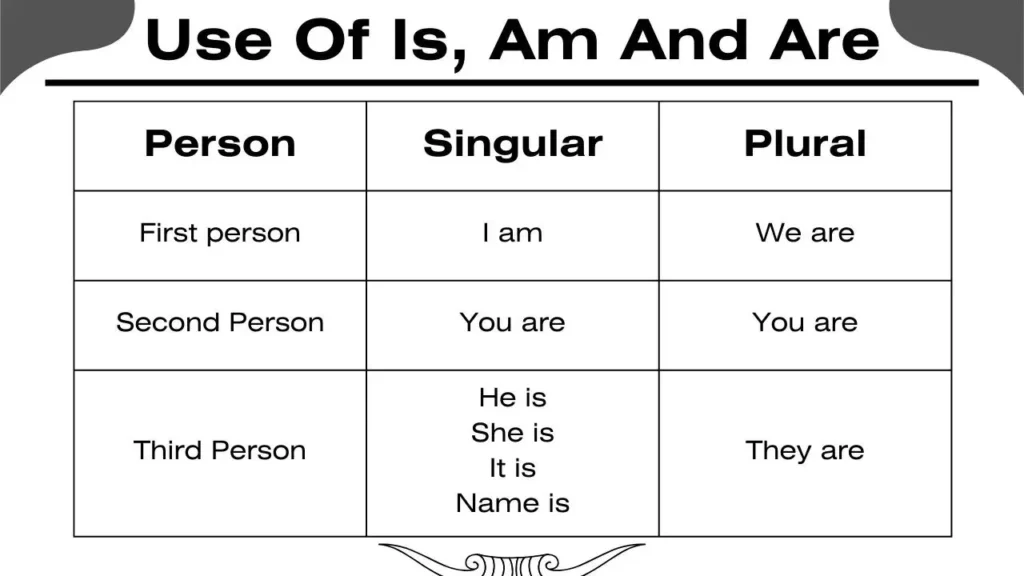
Rule 1 : This structure is used for those Hindi sentences whose verb ends with “Is/am/are V4 + To”
Examples:
- She is going to have a meeting with the manager.
- They are going to have a new car soon.
- I am going to have a big party for my birthday.
- He is going to have a chance to present his idea.
- We are going to have a holiday in the mountains next month.
- The team is going to have a new project to work on.
- She is going to have an exciting opportunity to travel.
- They are going to have a wonderful time at the festival.
- I am going to have a break after this busy week.
- He is going to have a chance to meet the celebrity.
Rule 2 : Use this rule for those sentences whose verb ends with “To Have, To Has” etc.
Examples:
- She is to have the report ready by tomorrow.
- They are to have a decision made by the end of the week.
- I am to have all the documents submitted by Friday.
- He is to have the presentation completed by noon.
- We are to have the project delivered on time.
- The team is to have the results analyzed by the deadline.
- She is to have her assignments finished before the meeting.
- They are to have their feedback provided by the end of the day.
- I am to have the invoice sent to the client immediately.
- He is to have his keys returned by the end of the day.
FAQ: Is, Am, Are
1.What is the difference between “is,” “am,” and “are”?
“Is”: Used with singular third-person subjects (he, she, it).
“Am”: Used with the first-person singular subject (I).
“Are”: Used with plural subjects (they, we) and singular “you.”
2. How are “is,” “am,” and “are” used in questions?
“Is”: For singular third-person subjects.
Example: Is she here?
“Am”: For the first-person singular subject.
Example: Am I late?
“Are”: For plural subjects and singular “you.”
Example: Are they coming? / Are you ready?
3. How are “is,” “am,” and “are” used in negative sentences?
“Is”: She is not (isn’t) here.
“Am”: I am not (aren’t) sure.
“Are”: They are not (aren’t) here.
4. What are the past tense forms of “is,” “am,” and “are”?
“Is” becomes “was”.
“Am” becomes “was”.
“Are” becomes “were”.
5. How are they used in continuous tenses?
“Is”: She is eating.
“Am”: I am studying.
“Are”: They are playing.
6. How do they function in passive voice?
“Is”: The book is read.
“Am”: I am invited.
“Are”: The letters are sent.
7. How are “is,” “am,” and “are” used in conditionals?
“Is”: If he is available, we will call him.
“Am”: If I am invited, I will go.
“Are”: If they are ready, we can start.
8. What are common mistakes?
Incorrect: They is here.
Correct: They are here.
Incorrect: She am happy.
Correct: She is happy.
Read Also:
- Preposition Of: Up, Down, Behind, Beside, Between And Among
- Use Of By, In, On: Uses, Rules & Examples
- Use Of This, That, These, Those: Difference, Rules & Examples
- Use Of At / By / Near: Uses, Rules, Formula And Examples
- Different Between Countable And Uncountable Noun
- Use Of A, An And The: Definition, Rules And Examples

